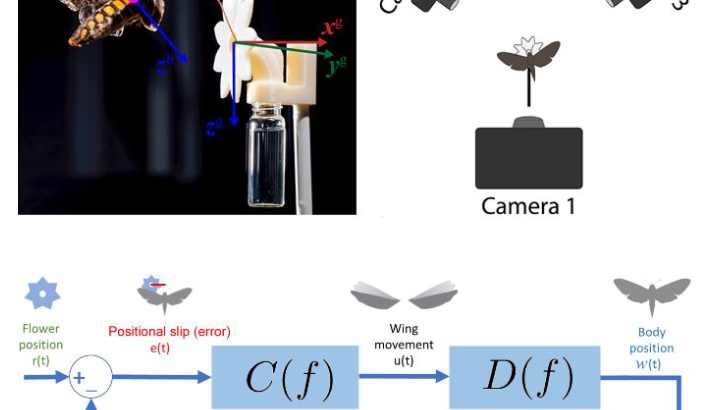One aspect of flight agility of hawkmoth M. sexta is that it sustains long bouts of hovering mid-air while feeding from wind-blowing flowers. Interestingly, this flower tracking phenomenon turns out to be linear i.e. it emerges as a linear relationship between flower and moth positions for a range of speeds close to the hover-feeding equilibrium of the hawkmoth. However, we do not know how this simplicity emerges from the integration of complex physiological processes and nonlinear flight mechanics. Through precise measurements of 3D wing and body kinematics in experiments on flower-tracking hawkmoths, we apply system identification techniques to characterize hawkmoth sensorimotor control and flight mechanics and reveal how the flower-tracking linearity emerges. Exploring how the component systems are operating here is critical to understanding how the physiology and flight mechanics integrate in a closed loop to implement agile control of flight not just for flower tracking but for diverse flight maneuvers as well.
